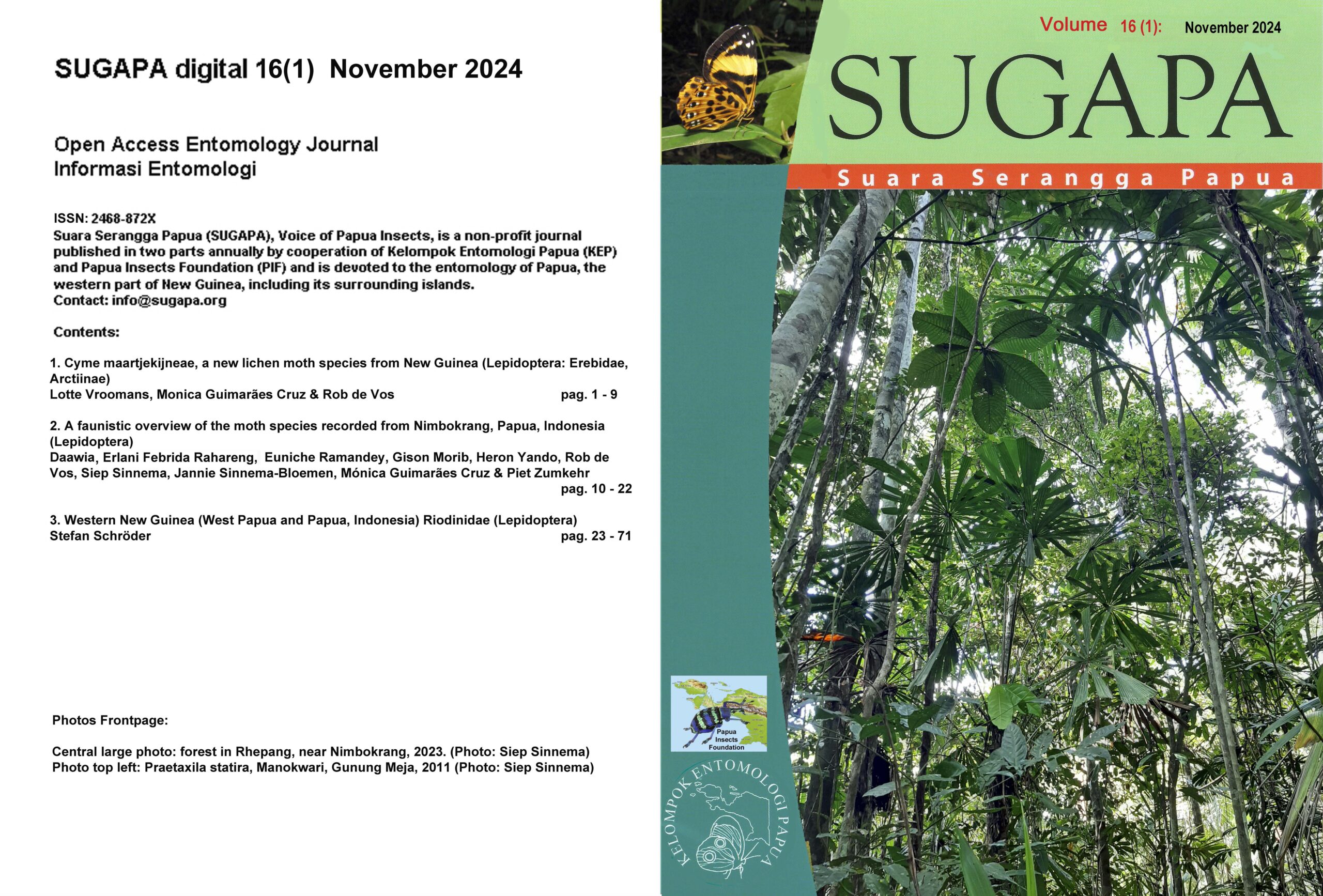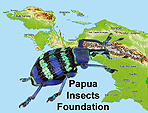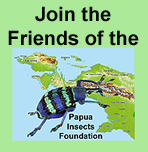Suara Serangga Papua, 2007, 2 (1) July – September 2007
1.Evie L. Warikar, Nelly Lunga & Ervina Indrayani
Food sources of Nymphalid butterflies in the forest at Campus Universitas Cenderawasih, Waena
Background
The forest around the Campus UNCEN is a study object for students, rich with
flora and fauna and a good place for inventory of food plants for butterflies.
Food plants of 11 species of Papilionidae were published (Banuaty, 2005), with
six food plants for caterpillars and ten species for nectar sucking
butterflies.
Many activities of local people caused serious forest damage, which may cause a
decline of the number of food plants, influencing on its turn the number of
butterfly species and its populations.
Result
During 15 days in the period 13 May to 24 June 2006 the survey was held, resulting in twelve species plants and three kinds of minerals, found along rivers, in grass land and secondary forest. Food for butterflies was the nectar of the flowers, rotten fruits and bracts. Twenty six species of Nymphalids were feeding on the above mentioned food sources. Bidens pilosa was often used for consumption; of less interest were Ficus sp. Macaranga tesselata, Freycinetia sp., and Parastemon urophylus were food plants for Lexias and Taenaris. We observed Lexias (subfamily Nymphalinae) and Taenaris (subfamily Morphinae) consuming dropped bracts of Freycinetia sp. (family Pandanaceae). Concluding, food plants for Nymphalid butterflies were found in all three habitats, which effected the presence of Nymphalids at the Campus of the University. At river sides, of course, many minerals are available, which are very poor in grass land and secondary forest.
Download in PDF:

 Open Access Entomology Journal
Open Access Entomology Journal


